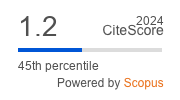The dexpantenol's gastroprotective proprieties investigation use by NSAID-gastropathy model (preclinical study)
https://doi.org/10.33380/2305-2066-2025-14-4-2153
Abstract
Introduction. The search for new gastroprotectors remains relevant, one of which could be dexpanthenol – a precursor of pantothenic acid that is non-toxic when taken orally. In Russia, systemic dexpanthenol preparations are not registered, and their use for treating acid-related diseases (ARDs) of the gastrointestinal tract isn’t known, and studying its gastroprotective properties when administered orally is promising.
Aim. Study of gastroprotective properties of dexpanthenol in oral administration using a model of gastropathy caused by non-steroidal anti-inflammatory drugs (NSAID-induced gastropathy) in preclinical research.
Materials and methods. The studies were conducted on 142 male outbred white rats weighing 220–280 g. The model used was NSAID-induced gastropathy with ulcerogenic agent sodium diclofenac, administered orally in a single dose of 50 mg/kg, euthanasia was performed 3 hours after administration via an overdose of chloroform anesthesia. Dexpanthenol was administered 1 hour before sodium diclofenac in a single oral dose in the form of an aqueous solution at doses of 400, 200, 40 mg/kg, and in the form of a developed 0.4 % gel (using high-viscosity chitosan as a gelling agent) at a dose of 7 mg/kg. Comparative drugs: dioxomethyltetrahydropyrimidine (syn. methyluracil) at a dose of 42 mg/kg, bismuth tripotassium dicitrate at a dose of 17 mg/kg. Both drugs were administered orally 1 hour before sodium diclofenac in a single dose. Evaluation criteria: number of animals with ulcers, number and area of ulcers on the gastric mucosa (GM) – determined using developed software written in Python with a graphical user interface (GUI). Calculation of the Pauls index and antiulcer activity index using known formulas, conducted histological examinations of the gastric mucosa with hematoxylin-eosin staining.
Results and discussion. It has been established that dexpanthenol provides a dose-dependent statistically significant reduction in the number and area of ulcers on the gastric mucosa, maximally by 2.7 times (at a dose of 40 mg/kg, 1,0 % aqueous solution, single oral administration) compared to the control group, and antiulcer activity index is 3.7, which exceeds the effectiveness of methyluracil. The 0,4 % dexpanthenol gel at a dose of 7 mg/kg demonstrated a significant reduction in ulcer area by 63 %, with an antiulcer activity index of 2.7, surpassing the effectiveness of bismuth tripotassium dicitrate. This is confirmed by signs of reduced inflammation intensity and activation of regeneration processes according to histological studies. The observed effects are likely attributed not only to dexpanthenol’s intrinsic activity but also to synergistic interactions with chitosan and the gastroprotective mucoadhesive properties of the gel formulation. The revealed gastroprotective activity of dexpanthenol aligns with its known mechanisms of action, including preservation of phospholipid bilayer integrity, modulation of mucin and tight junction (TJ) protein synthesis, regulation of nuclear transcription and apoptosis factors, growth factors, cytokines, and inflammatory mediators, cell division and cell differentiation.
Conclusion. For the first time, it has been proven that dexpanthenol, when administered orally in a single dose on the NSAID-gastropathy model, exhibit gastroprotective activity. It provides a significant statistically significant reduction in the number and area of ulcers compared to the control group. The antiulcer activity index is 3.7 (at a dose of 40 mg/kg, 1.0 % aqueous solution) surpassing the efficacy of methyluracil, 2,7 – when administered as a 0,4 % gel at 7 mg/kg (with chitosan as the gelling agent), these results were confirmed by histological examination and demonstrated superior effectiveness compared to bismuth tripotassium dicitrate.
About the Authors
A. Yu. KuznetsovRussian Federation
1, Universitetskaya ploshchad, Voronezh, 394018
A. V. Buzlama
Russian Federation
1, Universitetskaya ploshchad, Voronezh, 394018
S. Doba
Syrian Arab Republic
10th project , Latakia
References
1. Trukhan D. I., Filimonov S. N. Side effects of proton pump inhibitors with long-term use. A review of recent publications. Medicine in Kuzbass. 2025;24(1):61–72. (In Russ.)
2. Tryapyshko A. A., Dekhnich N. N. Combination of gastroprotectors and probiotics in the eradication of H. pylori infection: results of a randomized comparative clinical trial. Clinical Microbiology and Antimicrobial Chemotherapy. 2023;25(2):142–149. (In Russ.) DOI: 10.36488/cmac.2023.2.142-149.
3. Kurmanova E. N., Ferubko E. V., Kurmanov R. K., Martynchik I. A. Gastroprotective and anti-inflammatory properties of bupleurum aureum dry extract. Drug development & registration. 2017;(2):222–225. (In Russ.)
4. Doba S., Buzlama A., Kuznetsov A. Pharmacological effects of dexpanthenol. Research Journal of Pharmacy and Technology. 2024;17(7):3499–3504. DOI: 10.52711/0974-360X.2024.00547.
5. Dvoriankova E. V. Place of dexpanthenol in clinical practice. Russian Journal of Clinical Dermatology and Venereology. 2020;19(1):82–86. (In Russ.) DOI: 10.17116/klinderma20201901182.
6. Smekhova I. E., Shigarova L. V., Andreeva P. I., Flisyuk E. V., Dzyuba A. S. Application of Quality-by-Design approach to justify the composition and technology of two-component suppositories. Drug development & registration. 2022;11(4):142–149. (In Russ.) DOI: 10.33380/2305-2066-2022-11-4-142-149.
7. Cagin Y. F., Atayan Y., Sahin N., Parlakpinar H., Polat A., Vardi N., Tagluk M. E., Tanbek K., Yildiz A. Beneficial effects of dexpanthenol on mesenteric ischemia and reperfusion injury in experimental rat model. Free Radical Research. 2016;50(3):354–365. DOI: 10.3109/10715762.2015.1126834.
8. Uysal H. B., Dagli B., Yilmaz M., Kahyaoglu F., Gökçimen A., Omurlu I. K., Demirc B. Protective effects of dexpanthenol against acetaminophen-induced hepatorenal damage. Biomedical Research. 2017;28(2):740–749.
9. Cagin Y. F., Parlakpinar H., Vardi N., Polat A., Atayan Y., Erdogan M. A., Tanbek K. Effects of dexpanthenol on acetic acid-induced colitis in rats. Experimental and Therapeutic Medicine. 2016;12(5):2958–2964. DOI: 10.3892/etm.2016.3728.
10. Motatabzadeh S. M., Abtahi Froushani S. M. Effects of adding dexpanthenol to prednisolone in an experimental model of inflammatory bowel disease. Journal of Advances in Medical and Biomedical Research. 2020;28(130):237–246. DOI: 10.30699/jambs.28.130.237.
11. Karadag A., Ozdemir R., Kurt A., Parlakpinar H., Polat A., Vardi N., Taslidere E., Karaman A. Protective effects of dexpanthenol in an experimental model of necrotizing enterocolitis. Journal of Pediatric Surgery. 2015;50(7):1119–1124. DOI: 10.1016/j.jpedsurg.2014.10.053.
12. Millet V., Gensollen T., Maltese M., Serrero M., Lesavre N., Bourges C., Pitaval C., Cadra S., Chasson L., Vu Man T. P., Masse M., Martinez-Garcia J. J., Tranchida F., Shintu L., Mostert K., Strauss E., Lepage P., Chamaillard M., Broggi A., Galland F. Harnessing the Vnn1 pantetheinase pathway boosts short chain fatty acids production and mucosal protection in colitis. Gut. 2022;72(6):1115–1128. DOI: 10.1136/gutjnl-2021-325792.
13. Baginskaya A. I., Ferubko E. V., Kurmanova E. N., Voskoboynikova I. V., Kolkhir V. K., Sidel’nikov N. I. Experimental models of erosive and ulcerative lesions of the stomach and duodenum. Moscow: Izdatel’skiy dom «Russkiy vrach»; 2017. 96 p. (In Russ.)
14. Buzlama A. V., Nikolaevskiy V. A., Chernov Yu. N., Slivkin A. I. Preclinical studies of medicinal substances. Moscow: GEOTAR-Media; 2017. 383 p. (In Russ.)
15. Mironov A. N., editor. Guidelines for conducting preclinical drug trials. Part One. Moscow: Grif i K; 2012. 944 p. (In Russ.)
16. Ceylan H., Yapici S., Tutar E., Ceylan N. O., Tarakçıoğlu M., Demiryurek A. T. Protective effects of dexpanthenol and Y-27632 on stricture formation in a rat model of caustic esophageal injury. Journal of Surgical Research. 2011;171(2):517–523. DOI: 10.1016/j.jss.2010.05.005.
17. Zhao X., Zhang S., Shao H. Dexpanthenol attenuates inflammatory damage and apoptosis in kidney and liver tissues of septic mice. Bioengineered. 2022;13(5):11625–11635. DOI: 10.1080/21655979.2022.2070585.
18. Ozcan M. S., Savran M., Kumbul Doguc D., Kubra Dogan H., Altintas M., Cosan S. Dexpanthenol ameliorates lipopolysaccharide-induced cardiovascular toxicity by regulating the IL-6/HIF1α/VEGF pathway. Heliyon. 2024;10(1):e24007. DOI: 10.1016/j.heliyon.2024.e24007.
19. Kırgız Ö., Altuğ M. E., Özkan H., Han M. C., Akçakavak G., Özarslan A. C., Yücel S. 45S5 bioactive glass-ointment positively effects on wound healing in rats by regulating TNFα, Il-10, VEGF, and TGFβ. Journal of Clinical Laboratory Analysis. 2024;38(17–18):e25094. DOI: 10.1002/jcla.25094.
20. Shin J. Y., Kim J., Choi Y.-H., Kang N.-G., Lee S. Dexpanthenol promotes cell growth by preventing cell senescence and apoptosis in cultured human hair follicle cells. Current Issues in Molecular Biology. 2021;43(3):1361–1373. DOI: 10.3390/cimb43030097.
21. Heise R., Skazik C., Marquardt Y., Czaja K., Sebastian K., Kurschat P., Gan L., Denecke B., Ekanayake-Bohlig S., Wilhelm K.-P., Merk H. F., Baron J. M. Dexpanthenol modulates gene expression in skin wound healing in vivo. Skin Pharmacology and Physiology. 2012;25(5):241–248. DOI: 10.1159/000341144.
22. Yildizhan E., Ulger B. V., Akkus M., Akinci D., Basol O. Comparison of topical sucralfate with dexpanthenol in rat wound model. International Journal of Experimental Pathology. 2022;103(4):164–170. DOI: 10.1111/iep.12441.
Supplementary files
|
|
1. Графический абстракт | |
| Subject | ||
| Type | Исследовательские инструменты | |
View
(1MB)
|
Indexing metadata ▾ | |
Review
For citations:
Kuznetsov A.Yu., Buzlama A.V., Doba S. The dexpantenol's gastroprotective proprieties investigation use by NSAID-gastropathy model (preclinical study). Drug development & registration. (In Russ.) https://doi.org/10.33380/2305-2066-2025-14-4-2153










































